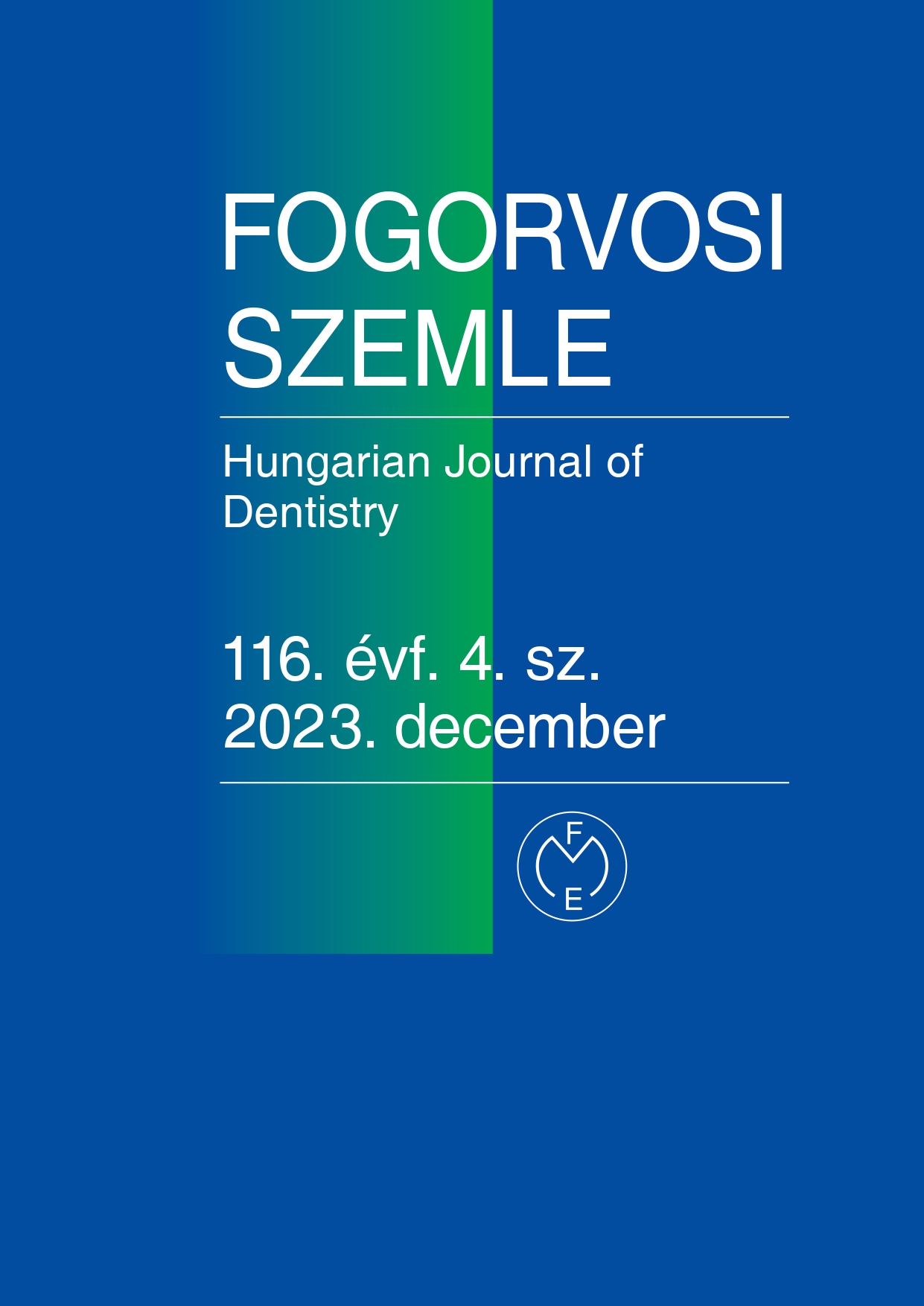Comprehensive dental care for Autism Spectrum Disorder (ASD) patient
Abstract
Today’s modern digital dentistry aims at predictable outcomes, made possible by facially driven treatment planning, prototype
fabrication, copy-paste and continuous digital quality control. Furthermore, due to the comprehensive nature of
dentistry, a satisfactory end result is obtained by considering functional, aesthetic, gnathological and periodontal aspects.
In this case, we present the prosthodontic rehabilitation of a patient with Autism Spectrum Disorder (ASD), using bite-elevation
and fabrication of monolithic zirconia and porcelain-fused-to-metal bridges using a combination of conventional
and digital workflows.
The patient is a 41-year-old female with ASD and severe mental retardation. Dysgnathia, malocclusion and deep
overbite were observed. Following professional oral hygiene treatment and restorative dental procedures, a two-dimensional
digital smile design (3Shape Smile Design, Copenhagen, Denmark) and digital wax-up were prepared. The virtual
designs were 3D printed (NextDent, 3D Systems, Rock Hill, USA) and used to create self-curing acrylic (Structur 2 SC A2,
VOCO) mock-ups. The gothic arch tracing method was used to determine the centric relation position and a digital jaw
movement analysis was performed with a digital facebow (Zebris for Cermaill, Aman Girrbach, Austria). Based on the
increased occlusal vertical dimension long-term temporary polymethyl methacrylate restorations were fabricated. After
3 months of provisional period the functional temporary prostheses were copied with a copy-paste technique using an
intraoral scanner (3Shape Trios 3 Pod, Copenhagen, Denmark) to provide the design of the final prostheses. In this
case, we made a lower and upper pre-preparation scan and registered the intercuspidal position. In the next step, upper
and lower digital precision-situational impressions were taken. The pre-prep and prep scans were aligned in 3Shape design
software (3Shape Design Studio), where the final restorations were then designed. To record and mount the proper
maxillo-mandibular relationship of the casts, a silicon bite registration was used before the veneering process of the
lower metal frameworks The final restorations were cemented with resin-modified glass ionomer cement (GC Fuji Plus,
GC Corp., Tokyo, Japan).
If the steps of the modern digital workflow are carefully followed, necessarily supplemented by analogue steps, a predictable
end result is achieved that is both functionally and aesthetically satisfying the patient.
References
Alshatrat, SM, IA Al-Bakri and WM Al-Omari: Dental Service Utilization and Barriers to Dental Care for Individuals with Autism Spectrum Disorder in Jordan: A Case-Control Study. Int J Dent 2020; 3035463. https://doi.org/10.1155/2020/3035463
Bhuvaneswaran, M: Principles of smile design. J Conserv Dent 2010; 13 (4): 225–232. https://doi.org/10.4103/0972-0707.73387
Coachman, C and RD Paravina: Digitally Enhanced Esthetic Dentistry – From Treatment Planning to Quality Control. J Esthet Restor Dent 2016; 28 Suppl 1: S3–4. https://doi.org/10.1111/jerd.12205
Coachman, C and M.J.Q.D.T. Calamita: Digital smile design: a tool for treatment planning and communication in esthetic dentistry. 2012; 35: 103–111. https://www.semanticscholar.org/paper/Digital-Smile-Design%3A-A-Tool-for-Treatment-Planning-Coachman-Calamita/9aa54f580470d763a4f3719b05a90b6d0dc0241d
Coachman, C, et al: Interdisciplinary guided dentistry, digital quality control, and the “copy-paste” concepts. J Esthet Restor Dent 2021; 33 (7): 982–991. https://doi.org/10.1111/jerd.12736
Design, DS: 10 DSD commandments for holistic, digital and emotional dentistry. 2022 March 27, 2023] https://digitalsmiledesign.com/blog/article/10-dsdcommandments- for-holistic-digital-and-emotional-dentistry.
First, MB: Diagnostic and statistical manual of mental disorders, 5th edition, and clinical utility. J Nerv Ment Dis 2013; 201 (9): 727–729. https://doi.org/10.1097/NMD.0b013e3182a2168a
Garcia , PP, et al: Digital smile design and mock-up technique for esthetic treatment planning with porcelain laminate veneers. J Conserv Dent 2018; 21 (4): 455–458. https://doi.org/10.4103/JCD.JCD_172_18
Herma nn, P, Kispélyi, B: Fogpótlástan. Esztétika a fogpótlástanban, ed. CM Borbély J, Ábrám E, Berze I. 2022, Budapest: Semmelweis Kiadó és Multimédia Stúdió.
Joda , T, F Zarone and M Ferrari: The complete digital workflow in fixed prosthodontics: a systematic review. BMC Oral Health 2017; 17 (1): 124. https://doi.org/10.1186/s12903-017-0415-0
Magne, P and M Magne: Use of additive waxup and direct intraoral mock-up for enamel preservation with porcelain laminate veneers. Eur J Esthet Dent 2006; 1 (1): 10–19.
Poggio, CE, et al: Metal-free materials for fixed prosthodontic restorations. Cochrane Database Syst Rev 2017; 12 (12): Cd009606. https://doi.org/10.1002/14651858.CD009606.pub2
Róth, I, et al: Digital intraoral scanner devices: a validation study based on common evaluation criteria. BMC Oral Health 2022; 22 (1): 140. https://doi.org/10.1186/s12903-022-02176-4
Segundo, A.R.T.C., et al: CAD-CAM natural restorations-Reproducing nature using a digital workflow. 2023. https://doi.org/10.1111/jerd.13028
Sharma, SR, X Gonda and FI Tarazi: Autism Spectrum Disorder: Classification, diagnosis and therapy. Pharmacol Ther 2018; 190: 91–104. https://doi.org/10.1016/j.pharmthera.2018.05.007
Szentpétery, A, Hermann, P: Gnatológia. 2018, Budapest: Semmelweis Kiadó és Multimédia Stúdió.
Trixler, B, H Pusztafalvi: Milyen nehézségek adódnak az autizmus spektrum zavarokban érintett személyek ellátása során? 2022. In: A segítő pedagógia aspektusai. Soproni Egyetem Kiadó, Sopron, 32–40.
Copyright (c) 2023 Authors

This work is licensed under a Creative Commons Attribution 4.0 International License.


.png)




1.png)



